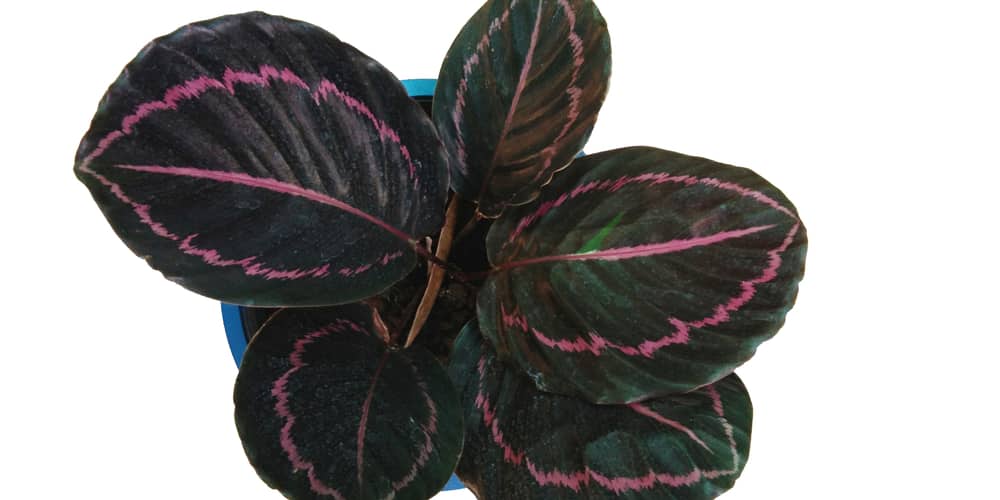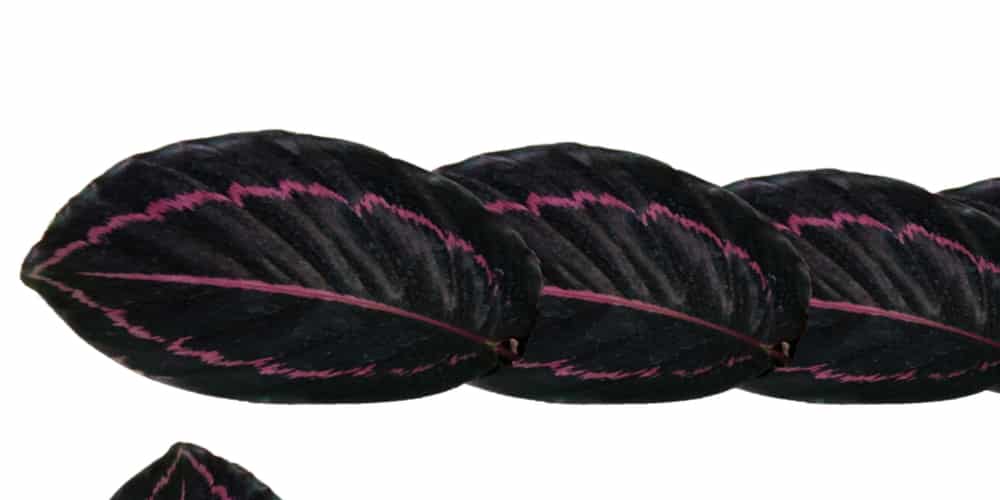The plant Calathea Roseo picta, known as the Rose Painted Calathea, is a beautiful addition to any home. Its dark green leaves are adorned with pink and white stripes, and its dainty yellow flowers add a splash of color.
It’s a low-maintenance plant that’s easy to care for, making it an excellent choice for both beginner and experienced plant parents.
| Botanical Name | Calathea Roseopicta |
| Common Name | Rose-Painted Calathea |
| Plant Type | Perennial |
| Flower Color | White and Purple |
| Size When Mature | 20 Inches |
| Bloom Time | Summer |
| Sun Requirements | Partial Sun |
| USDA Hardiness Zones | 13 |
| Soil PH Range | 6-7 |
| Soil Type | Acidic, Neutral, Well-draining |
| Water Needs | Medium-High |
| Native Area | Brazil |
What You Need to Know About Calathea Roseopicta
The Calathea Roseopicta is native to Brazil and gets its name from its beautiful green and pink leaves. This plant is a member of the Marantaceae family, including other popular houseplants such as the Calathea Zebrina and the Stromanthe Triostar.
This plant is an evergreen, meaning it will retain its leaves year-round. It’s a slow-growing plant, so you won’t have to worry about outgrowing its space.
Regarding its height, the plant can grow up to 20 inches tall but is typically much smaller when grown indoors.
Growing plants can sometimes be a hassle; however, the Calathea Roseopicta is a low-maintenance plant that’s easy to care for. Giving the plant proper water and soil is all you need to do to keep it healthy and happy.
The plant being safe for pets is also a plus. The Calathea Roseopicta is non-toxic to dogs and cats, making it an excellent choice for households with four-legged friends.
And that’s not all; small, white, and purple flowers bloom from the plant during summer, adding a touch of color and beauty to the plant’s lush leaves.
How to Care for Calathea Roseopicta
Here’s everything you need to know about growing and caring for a thriving Calathea Roseo picta:
Light
The most important thing to remember when caring for this plant is that it prefers bright, indirect light. Direct sunlight will scorch the leaves, so it is best to place the plant where it will receive indirect light for most of the day.
Placing the plant in front of north, east, or west-facing windows is ideal for the plant.
Water and Soil Needs
This plant is not drought-tolerant and prefers to be kept moist. The best way to water a Calathea Roseopicta is to allow the top inch of soil to dry out between watering.
When it comes to soil, the Calathea Roseo picta prefers a light, well-draining potting mix. A mixture of peat moss, perlite, and vermiculite is a good option for this plant. Ideally, place the plant in soil with a pH range of 6-7.
Overwatering this plant can lead to yellowing leaves and root rot, so ensuring the soil has adequate drainage is vital.
Temperature Requirements
First and foremost, the Calathea Roseopicta prefers warm temperatures. Maintaining a consistent temperature in your home is important, as sudden changes can cause the leaves to brown.
The ideal temperature for the plant is between 65ºF and 75ºF. If you live in a cooler climate, you may need to use a heating mat or grow light to provide additional warmth.
Additionally, the Calathea Roseopicta is hardy in USDA zone 13.
Fertilizer
The best fertilizer to use on a Calathea Roseopicta is a balanced liquid fertilizer formulated for use on foliage plants. Feeding the plant every two weeks during the spring and summer seasons is best.
Slow-release granular fertilizers can also be used, but only during the spring. Fertilizer should be withheld altogether during the late fall and winter months when growth slows.
Common Diseases
Like all living things, Calathea Roseopicta is also susceptible to diseases. The most common issues include fungal infections and root rot.
Fungal infections are the most common disease among Calatheas. The best way to prevent these infections is by ensuring the plant has proper drainage and is not overwatered. If you notice any signs of a fungal infection, such as yellowing leaves or brown spots, treat the plant with a fungicide immediately.
Root rot is another common issue, especially in Calathes that are kept too wet. The roots will start to break down and decompose, eventually killing the plant. If you think your Calathea has root rot, stop watering it immediately and let the soil dry out completely. Once the roots have had a chance to recover, you can resume your regular watering schedule.
Calathea Roseopicta Propagation
The best way to propagate a Calathea Roseopicta is by division. This can be done in the spring or summer when the plant is actively growing.
To divide the plant, carefully remove it from its pot and gently shake off any excess soil. Using a sharp knife, divide the root ball into two or three sections. Each section should have several healthy roots.
Plant each section in its pot filled with a light, well-draining potting mix. Water the plants thoroughly and place them in a spot where they will receive indirect sunlight.
As the plants start to grow, you can begin watering them regularly. Once they have established themselves, you can fertilize them every two weeks during the spring and summer.
Related Article: Calathea Dottie Growth and Care Guide


